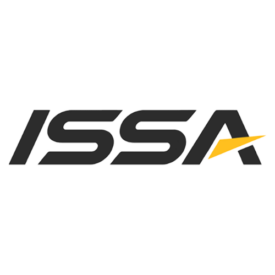Corrective exercises play a vital role in the long-term health, development, and overall success of training clients and athletes. One role of a coach is to prepare their athletes for optimal performance while foreseeing potential issues and addressing those concerns through various solutions. Like stretching, corrective exercises can often take a back seat during hours class sessions, as coaches program increased volume and/or conditioning segments to enhance the overall effectiveness of a strength/hypertrophy/metabolic phase. Due to those time constraints, athletes may find themselves neglecting and/or under-performing corrective exercise altogether, which can set both coaches and athletes up for disappointment and potentially sidelining injuries.
In this article, we will discuss the role of corrective exercises in weightlifters and functional fitness athletes, and how coaches can better program them into every group training session.
What are Corrective Exercises
Generally speaking, corrective exercise can be any movement that promotes and “corrects” a particular movement fault, muscular imbalance, and/or potential injuries due to lack of passive range of motion, mobility, stabilization, or a combination of the three.
Why Do Corrective Exercises
The importance of corrective exercises within a training program is to promote sound movement patterning, enhance injury resilience, and ultimately allow athletes to continually train at increasing intensities and training volumes to promote continual athletic development.

ISSA has certified over 475,000 students through their various certifications since 1988. It has a 90 percent test rate, a free retest, and tons of resources to help you become the best corrective exercise specialist you can be.
How to Choose Corrective Exercises
Determining what corrective exercises to program within a training session can be a challenging task. With infinite options and individual limitations of your athletes, coaches should systematically address the most common issues that correspond with the specific movements of the day.
How to Program Corrective Exercises in a Training Session
Since the purpose of corrective exercises is to correct poor movement patterns and/or promote increase range of motion, I have found it best to program these prior to work sets. Corrective exercise “circuits”, often performed after the dynamic warm up have been a very beneficial component to my athletes in our weightlifting club. Coaches and athletes can include these movements prior to beginning strength and power lifts, or even in alternating between unloaded barbell drills throughout warm-up sets. The key here is to allow athletes to perform these in non-fatigued states, as these movements often are challenge quality (not quantity) movement patterning which may take focus and intense coaching to help the athlete achieve favorable results.
How to Convey Corrective Exercises to Athletes
The ability to convey the importance and outcome of corrective exercises to your athletes can highly influence the effectiveness of the movements. Coaches need to have a full understanding of how to correctly perform and coach the corrective exercises, and be able to differentiate between athletes who are correctly performing the movements vs those who are simply going through the movements. The ability to recognize common compensation patterns in overhead positioning drills (for example; lumbar hyper-extension and internal rotation potentially caused by poor shoulder mobility) will allow coaches to promote quality movement that can make their athletes healthier, less injury prone, and increase performance.
Additionally, coaches need to have a full understanding and have the ability to convey that to their athletes. The best way to have athletes buy into corrective exercises and attack them with the same mental focus that is needed for a 90% 1RM back squat is for them to see corrective exercises as performance enhancing solutions.
Sample Corrective Exercise Format
This is the format that we use during Union Square Barbell Club sessions. Following a team dynamic warm-up, we will split the class into two groups; the first group will perform the following corrective exercise “circuits”, while the second group will perform plyometric jump training. After completing, they will switch, and then proceed into unloaded barbell drills and warm-up sets.
Clean & Jerk Correctives (2 sets of 40 seconds on: 20 seconds off)
-
- Weighted Thoracic Extension: 40 seconds
-
- Cossack Squat: 40 seconds
-
- Lat and Tricep Mobilty and Movement: 20 seconds per side
-
- Scapular Circles: 40 seconds
Snatch Correctives (2 sets of 40 seconds on: 20 seconds off)
-
- Pallof Press: 20 seconds per side
-
- Thoracic Side Lying Openers: 20 seconds per side
-
- Shoulder Reach and Lift Drills: 20 seconds per side
-
- Arm Bar: 20 seconds per side
Final Thoughts:
The infinite combinations and practical applications of corrective exercises allow for coaches to determine the most suitable format to administer corrective exercise within a training session. By conveying the intended outcomes to athletes will further increase the effectiveness of corrective exercise within a training sessions, and can further promote injury resilience and increase performance.
Editors note: This article is an op-ed. The views expressed herein are the authors and don’t necessarily reflect the views of BarBend. Claims, assertions, opinions, and quotes have been sourced exclusively by the author.
Featured Image: @muaythaischolar on Instagram